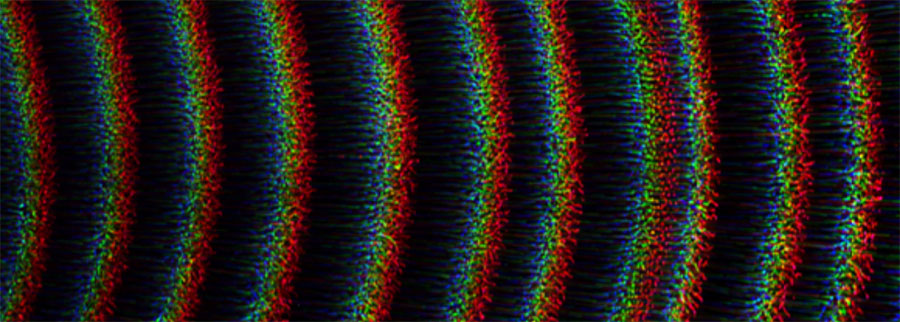New microgravity research finds that microparticles in complex plasma behave in nonuniform ways around varying electrical fields.
From the Journal: Physics of Plasmas
WASHINGTON, D.C., August 7, 2018 — 400 kilometers above Earth, researchers examined waves in complex plasma under microgravity conditions and found that the microparticles behaved in nonuniform ways in the presence of varying electrical fields. They report some of the first findings from the Plasma-Kristall 4 (PK-4) experiment in Physics of Plasmas, from AIP Publishing.
PK-4 is a collaboration between the European Space Agency and the Russian State Space Corporation “Roscosmos” to investigate complex plasmas. Complex or dusty plasmas contain electrons, ions and neutral gas, as well as microparticles such as dust grains. The microparticles become highly charged in the plasma and interact strongly with each other, which can lead to liquid or even crystalline behavior within the complex plasma. The most important property of such a system is that investigations of physical phenomena can be performed on the individual (micro-) particle level allowing new insights into fluid and solid-state physics.
Gravity distorts most complex plasmas experiments on Earth, so the microgravity environment on the International Space Station enables otherwise impossible research. In February 2017, researchers from the DLR-Institute of Materials Physics in Space at the German Aerospace Center (DLR) and Joint Institute for High Temperatures of the Russian Academy of Sciences observed dust density waves or visible sound waves as they moved through the complex plasma.

In the experiment, a microparticle cloud drifted in a plasma with a constant direct current and formed self-excited wave patterns. After that, the discharge polarity was reversed. Although the field strength was nearly identical for both discharge polarities, the wave patterns exhibited bifurcations: A new wave crest formed between the two old crests in the head of the microparticle cloud.
“The most interesting finding was the velocity of these waves strongly depends on the electric field, which is exciting the waves,” said Mikhail Pustylnik, an author on the paper. “We expect to encounter these types of waves in astrophysical situations where you might have dust — in a cometary tail, for example.”
“Many plasma processes are also used in the semiconductor industry,” Pustylnik said. Dust poses big challenges for the semiconductor industry because particles may damage a silicon wafer during manufacturing. Starting this fall, the researchers are planning additional experiments that will vary the range of electric fields by switching the polarity of the discharge.
###
For More Information:
Rhys Leahy
media@aip.org
301-209-3090
@AIPPhysicsNews
Article Title
Dust density waves in a dc flowing complex plasma with discharge polarity reversal
Authors
Surabhi Jaiswal, Mikhail Pustylnik, Sergey Zhdanov, Hubertus Thomas, Andrey Lipaev, Alexandr Usachev, Vladimir Molotkov, Vladimir Fortov, Markus Thoma and Oleg Novitskii
Author Affiliations
German Aerospace Center, Russian Academy of Sciences, University of Giessen, Gagarin Test and Research Cosmonaut Center
